“You might as well be dead as lose your courage for both are the same thing.” These words are scribbled on a piece of torn paper in Marie Trevelyan’s archive and they beautifully illustrate the life and attitude of this enigmatic Welsh writer.
But who was Marie Trevelyan and where do you start to piece together her life?
Perhaps by looking at the last physical trace of her existence in the graveyard of St Illtud’s church. But even this is complicated by the several identities that she inhabited.
In the picture below you can just make out the name Marie Trevelyan inscribed on the original headstone as it sinks into the earth to join her bones. This headstone was paid for by public donation in recognition of the town’s pride in her achievements. But Marie Trevelyan was of course her nom de plume, she was born Emma Thomas and her death was registered under her married name, Emma Paslieu.
More recently, a new headstone was erected by Llantwit Major Local History Society to commemorate the life of this extraordinary woman and in recognition of her role as a historian as well as a writer of fiction, though there is a degree to which the two are often mixed.
Marie Trevelyan was a keen historian and she had a particular interest in the role of women. The title of her first published book was ‘Brave Little Women Tales of the Heroism of Girls,’ a series of adventure stories for young women. Later books reflected her interest in semi-mythical heroines such as Boadicea and Eurgain.
Early Life
Marie Trevelyan was born Emma Thomas in 1853 to Illtyd and Mary Thomas at Court House, the home of her wealthy uncle William Thomas, who donated the large ornate clock that still graces Llantwit Major’s mediaeval town hall in honour of Queen Victoria’s jubilee. Four years later her sister Eva was born.
Her father, Illtud Thomas, was a stone mason / architect by trade. At some point in the early 1870’s he decided to leave rural Llantwit Major with his wife and teenage daughters, to further his career as an architect in Cardiff, Bristol and then London. In 1871 he was living in an hotel in St Mary Street, Cardiff and Emma and her sister Eva were living in Bute Street with an aunt and uncle, John and Jane Harry. They were listed on the census as “scholars”, which is very telling given their respective ages of 17 and 15, the school leaving age following the introduction of the Elementary Education Act of 1870 being aged 10. Emma and her sister would have been privately educated and judging from Emma’s future accomplishments this was money well spent.
Marriage
Not much is known about Emma’s London life, though we know that she had found work as a journalist and it is likely that this is how she met her future husband. On 24 June 1880 she married Frenchman Louis Cecil Edgar Paslieu at St Saviour’s Church, Lambeth. The following year their daughter Bronwen was born.
So, who was Louis Edgar Cecil Paslieu? A very good question indeed. It is doubtful that we will ever know for sure. Surviving relatives have tried to piece together the jigsaw but there are so many parts missing that the picture can only be distorted. He is variously called Louis Paslieu, Louis Cecil. Given as a medical doctor and / or a journalist. And in some accounts seems to have spent time treading the boards as an actor – not hugely surprising for someone who seems to have spent his life role-playing. Even the name is questionable, since Paslieu translates as ‘no place.’
Louis seemed to have courted controversy. In 1883 the Birmingham Daily Gazette libeled Sir Henry James, the attorney general, in an article written by the chief of editorial staff, Louis Paslieu in response to the consolidation bill.
He appears in the papers again in 1888 in several reports where he is the victim of a robbery in the company of an actor William Broughton, who was staying with him and who “left Princess theatre with Dr Paslieu.”
Other details that we know are that he was a member of the Primrose league, the Walsall Conservative Association and that he was a bigamist, changing his name and marrying twice more after his marriage to Emma.
Little wonder then that by 1891 Emma had been both married and separated from Louis Paslieu, and she had returned to her childhood home with her young daughter, Bronwen. Styling herself a widow, from this time onwards she needed to earn her own living. By the turn of the century her widowed father Illtyd had joined the the family at Wine Street, Llantwit Major and money was clearly in short supply.
Journalism and Books
The need to learn a living as the main breadwinner was always at Emma’s back and writing as Marie Trevelyan she tapped into the appetite for books with a Celtic connection, securing a London publisher, John Hogg for her Welsh History trilogy. The first of these three books to be published was Glimpses of Welsh Life and Character in 1893.
In an interview with The Western Mail on the publication of Welsh Life and Character Emma talked about her connection with London journalism, saying that during this time she “collected material for works on Wales” and “earnestly desired to devote myself to the subject nearest my heart. I believe there was vast and untrodden fields for a sympathetic Cymric writer on Wales and the Welsh.”
She dedicated her second book, From Snowdon to the Sea, published in 1894 to Lord Windsor, the then Lord Lieutenant of Glamorgan. He was Chairman of the Barry Docks and Railway Company, a keen antiquarian and spent at least part of the year at his family seat of St Fagan’s. Perhaps the dedication paid off, as five years later, in 1899, she was commissioned to write a tourist guide to places accessible from the Vale of Glamorgan and Barry Railways.
The Land of Arthur 1895
Next in the trilogy came The Land of Arthur in 1895, which as the title indicates, seems to have been an attempt to mine the seam of interest in Celtic mythology and Arthurian legends.
Britain’s Greatness Foretold 1900
The last of the three commissioned books was Britain’s Greatness Foretold, a re-telling of the story of Boudica, Britain’s warrior queen, who challenged the might of the Roman Empire. It is easy to see how she appealed to Marie Trevelyan as a character and heroine. She also took the opportunity to ‘cash in’ on the patriotic fervor and imperialism of the time, exacerbated by the bitter colonial war against the Boers in South Africa between 1899 and 1902 and to hint at a link between the warrior queen of the past and the present aged Queen Victoria.
Folklore and Folk-stories of Wales 1909
The book that seems to have best stood the test of time is her Folklore and Folk-stories of Wales. In the preface she expresses her desire to preserve and curate these stories and local legends before they disappear, saying “Folk-stories are gradually diminishing , and in the present day can only be obtained from the very oldest inhabitants, or from private manuscripts and notebook collections.” She often refers to her late father Illtud as a source for these stories since his memory was “reliable.”
However, authenticity seems to be less of an issue than telling a good story as she says that “Germs of truth can be found in the smallest scraps of tradition.”
Professor Juliette Woods in her article ‘A Welsh Triad: Charlotte Guest, Marie Trevelyan, Mary Williams,’ says that Marie Trevelyan “popularized Welsh folk traditions with all the benefits and problems which this entailed” and notes of Marie Trevelyan that, “Her particular relevance for folklore studies lies in her interest in local folklore and her fondness for female heroines. In neither area is she ever entirely reliable.”
It is interesting to note that even today new books on folklore often reference her Folklore and Folkstories of Wales.
HOLIDAY HAUNTS
Perhaps due to her connection with The Western Mail newspaper, Emma was commissioned to write Holiday Haunts in Glamorgan (referred to in the Western Mail 1899) to encourage passenger tourist trade on the newly opened Vale of Glamorgan and Barry Railways.
In this short pamphlet, she provides brief historical notes on places of interest along the Barry to Bridgend line, accompanied by photographs to whet the appetite of potential visitors. The longest entry is reserved for a chapter on Llantwit Major, which allows her to recycle some of the material from her previous books. (She returned to and expanded on this material for Llantwit Major Its History and Antiquities in 1910).
Llantwit Major Its History and Antiquities 1910
Dedicated to Eurgain and Illtud, Llantwit Major Its History and Antiquities brings together all of her love for the town of her birth, with her fascination for history and setting folk stories to paper. She tells the story of Eurgain, daughter of Welsh hero Caractacus, who supposedly founded a school at Llantwit Major that predated Illtud’s monastery. The source here seems to have been Iolo Morganwg whose work she would have been able to access through her friendship with Illtyd Nicholl and his substantial library at Ham Manor. She also utilizes this apocryphal history in her book Britain’s Greatness Foretold.
The Llantwit Major History book focuses primarily on the early period and whatever the doubtful validity of some of the claims, it provides a very useful glimpse into the history of the town, as well as some wonderful archival photographs.
Fortune Telling (Palmistry / Chiromancy)
From as early as 1898 a scan of Welsh newspapers online finds adverts for palmist Madame Paslieu, appearing at local fetes and fundraisers in The Ham and Merthyr Mawr. According to local historian Nigel Williams, local gentry would pull up in their carriages outside her house on Wine Street and go in to have their palms read. Presumably having first ‘crossed her palm with silver.’ We have no reason to believe that Emma was anything but genuine in this role and she was not unique in seeing palmistry as having a basis in science in this period (when phrenology the fashion for telling a person’s character by feeling the bumps on their head was also very popular). What we do know is that Emma struggled to make ends meet and that she was responsible for the family income. One of the things to admire about her is that she came to Llantwit a single parent and did all she could to keep her family afloat, be it journalism, authorship, selling insurance or telling fortunes.
Bronwen
Bronwen was Emma and Louis’ only child, though Louis went on to have two other children with Ida, who he bigamously ‘married’ after the separation from Emma. Here the information is very scant. We know that Bronwen was born in London in 1882 and that she was baptised in Llantwit Major seven years later in 1889. We can only speculate on the reasons for this. I had thought that perhaps Louis was Catholic but they were married in St Saviour’s which is an Anglican Church and being a Catholic would have precluded him from becoming a freemason.
We know that Bronwen lived with her mother until her mother’s death and that she was with her when she died as she registered the death. We also know that she was listed as a dressmaker’s assistant and then a dressmaker on the 1901 and 1911 census, respectively. We also know that attempts were made to raise money to help support her after her mother’s death.
However, shortly after her mother’s death she was admitted to Parc Gwyllt Asylum in Bridgend. The 1939 shows her an inmate there and her death is registered there in 1957. Beyond that there are glimpses of her in Hughie Andrews’ (a cousin) diaries as he mentions his wife visiting her in Bridgend. Finally, records show that she was buried in St Illtud’s graveyard, though there is nothing in the parish records to say where. Presumably she was interred with her mother, there being no money for a headstone.
Death of Marie Trevelyan
On 27th December 1922 Rev Henry Morris and others made an appeal for funds (on behalf her daughter) to bury Marie Trevelyan who had recently died aged 69 and "whose latter years were darkened by a desperate struggle against poverty caused by failing health and earning capacity."
Thanks to the efforts of Llantwit Major Local History Society Emma Thomas has not suffered the fate of her original headstone which is submerged almost entirely. Also, thanks to the skillful research and eloquent writing of local historian Nigel Williams, her life has been recorded in his fascinating article ‘Marie Trevelyan: An Authoress with Three Names,’ in volume 8 of Llantwit Major Aspects of its History. And thanks also to the local history society she has a well-placed and clearly legible headstone sat beside the original, where she lies beneath the shade of an interlocked evergreen oak and a cypress tree.
BIBLIOGRAPHY
Nigel Williams ‘Marie Trevelyan: An Authoress with Three Names’ (2008) in Llantwit Major Aspects of its History Volume 8
Juliette Woods ‘A Welsh Triad: Charlotte Guest, Marie Trevelyan, Mary Williams,’ (2000) in Women & Tradition A Neglected Group of Folklorists, eds Carmen Blacker & Hilda Davidson. Carolina Academic Press Durham North Carolina




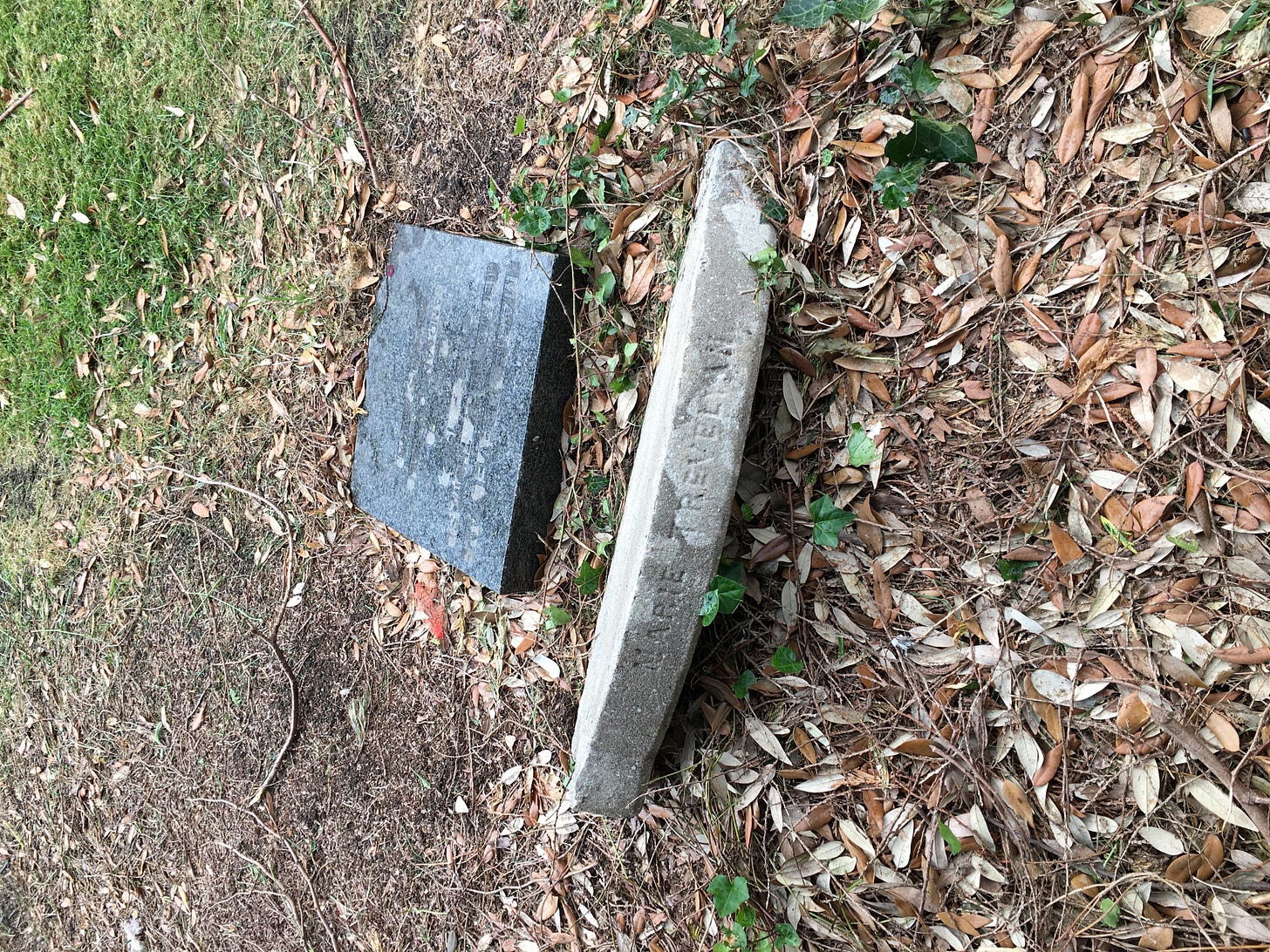


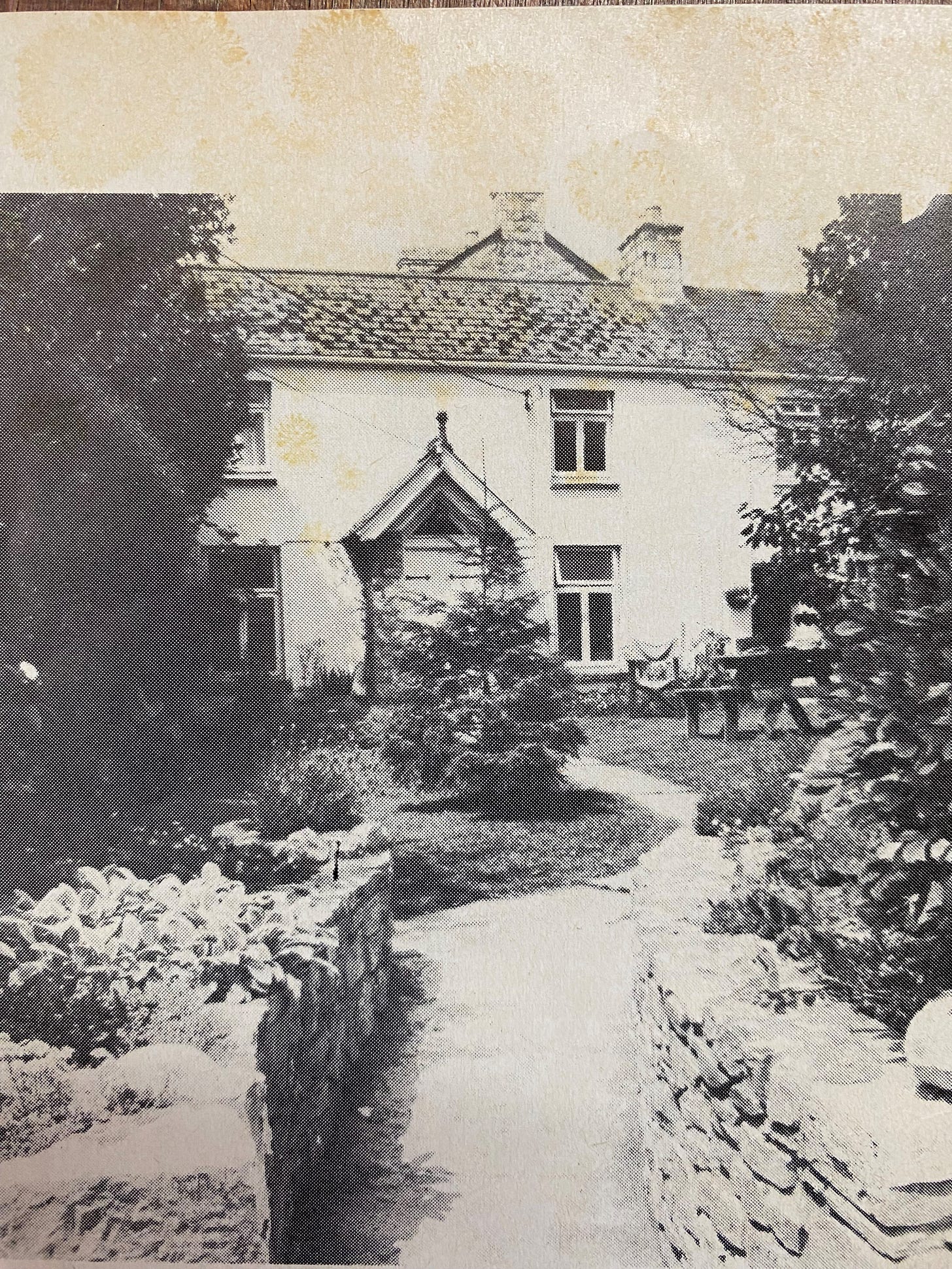
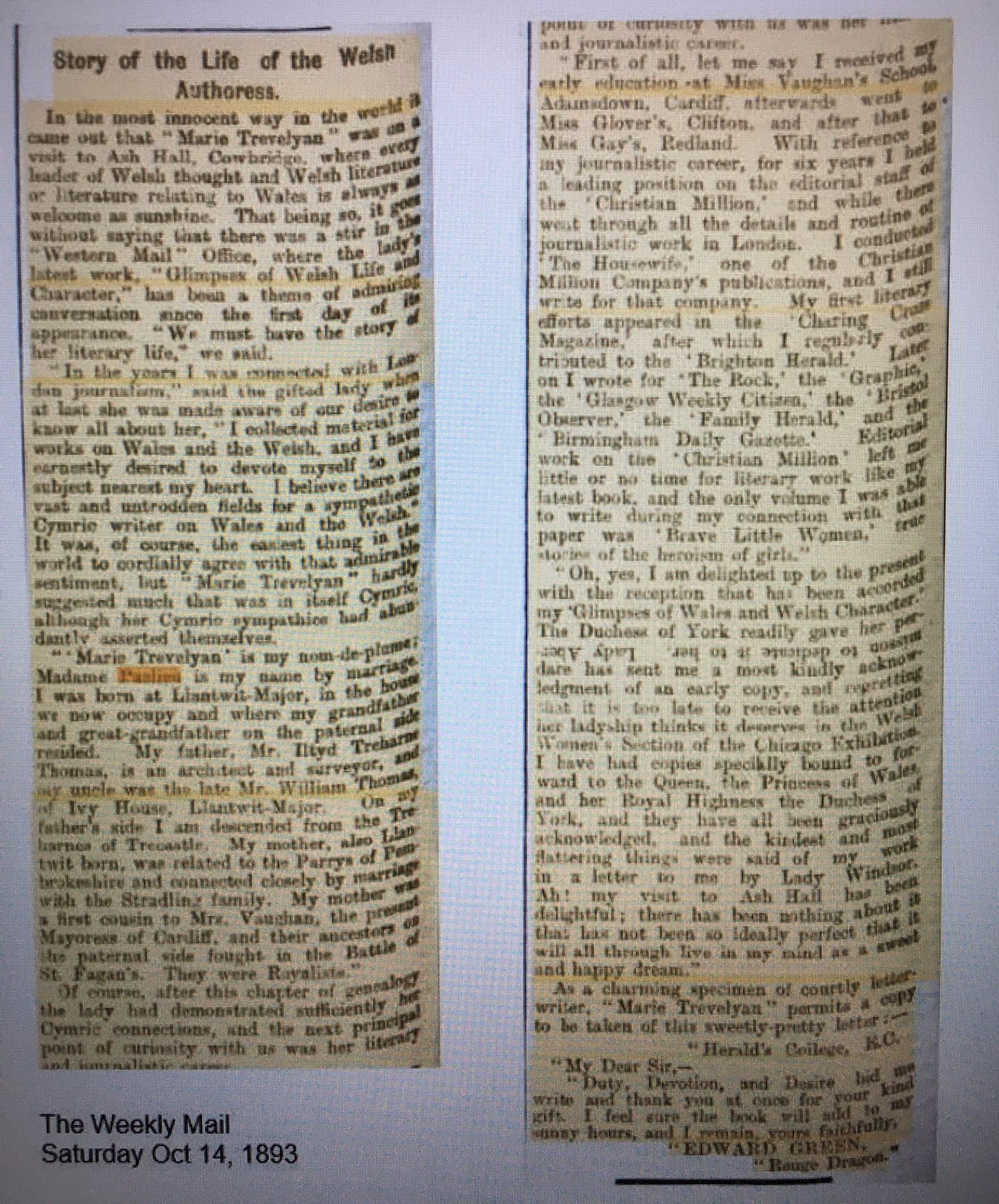
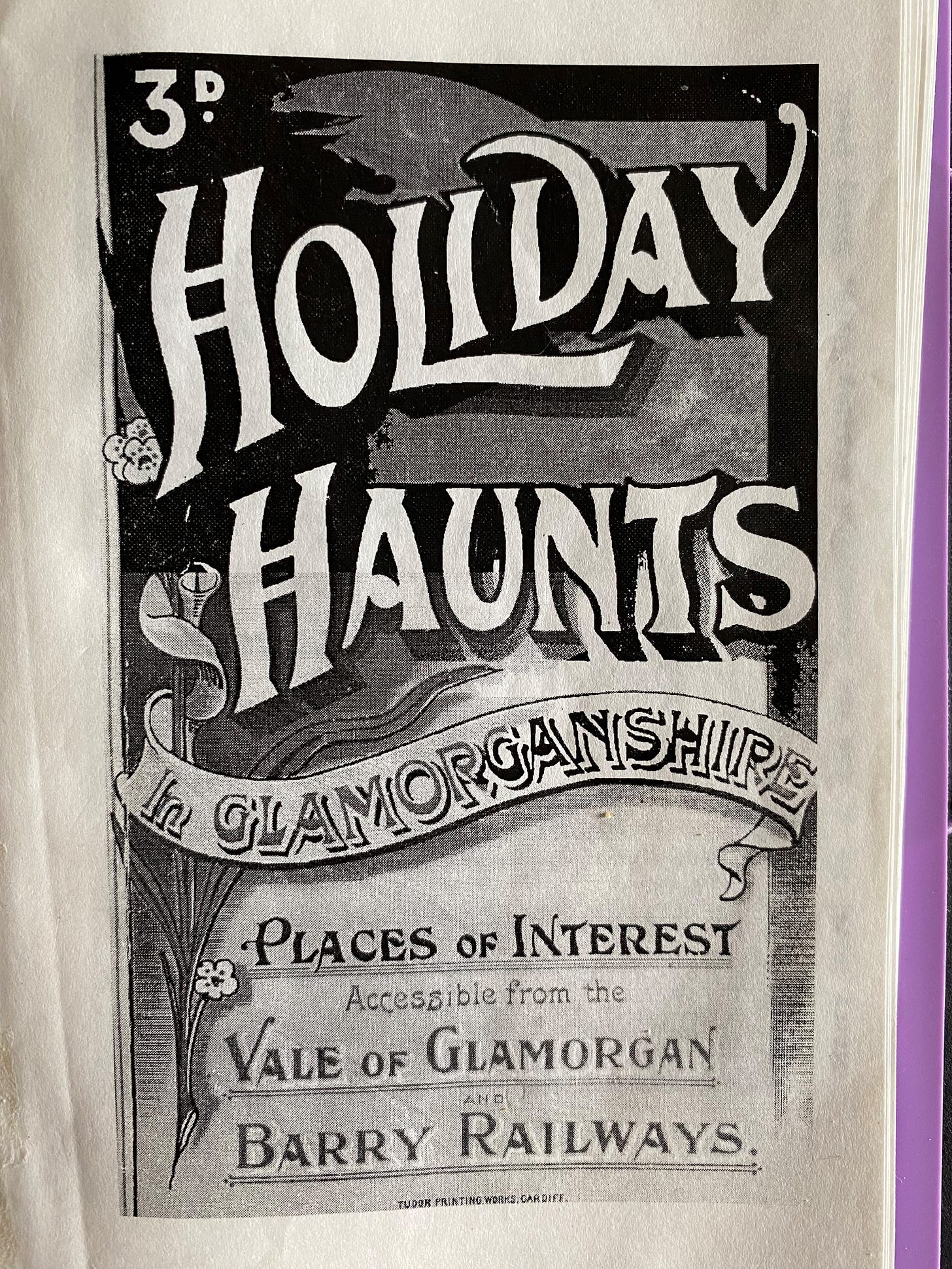

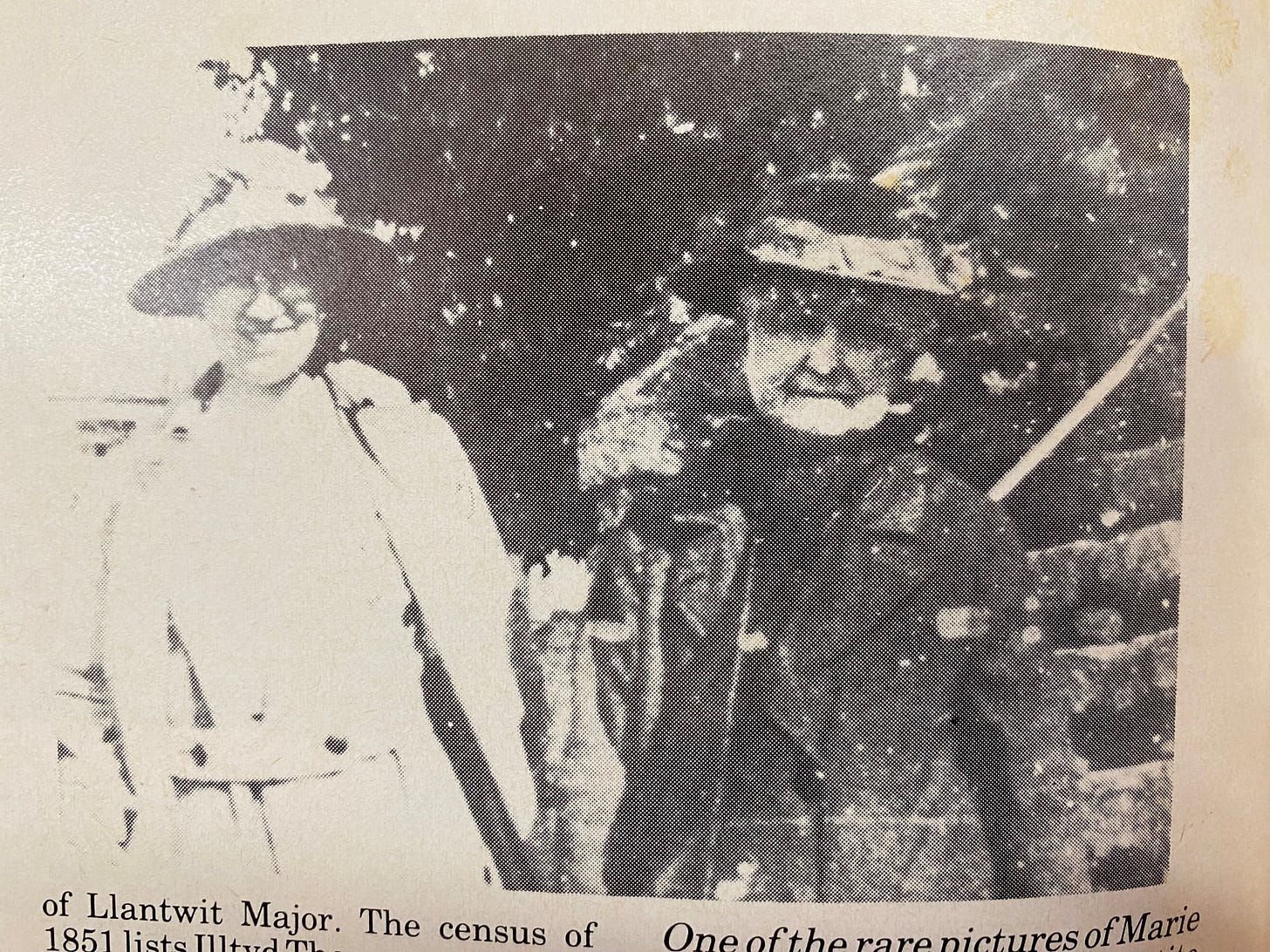
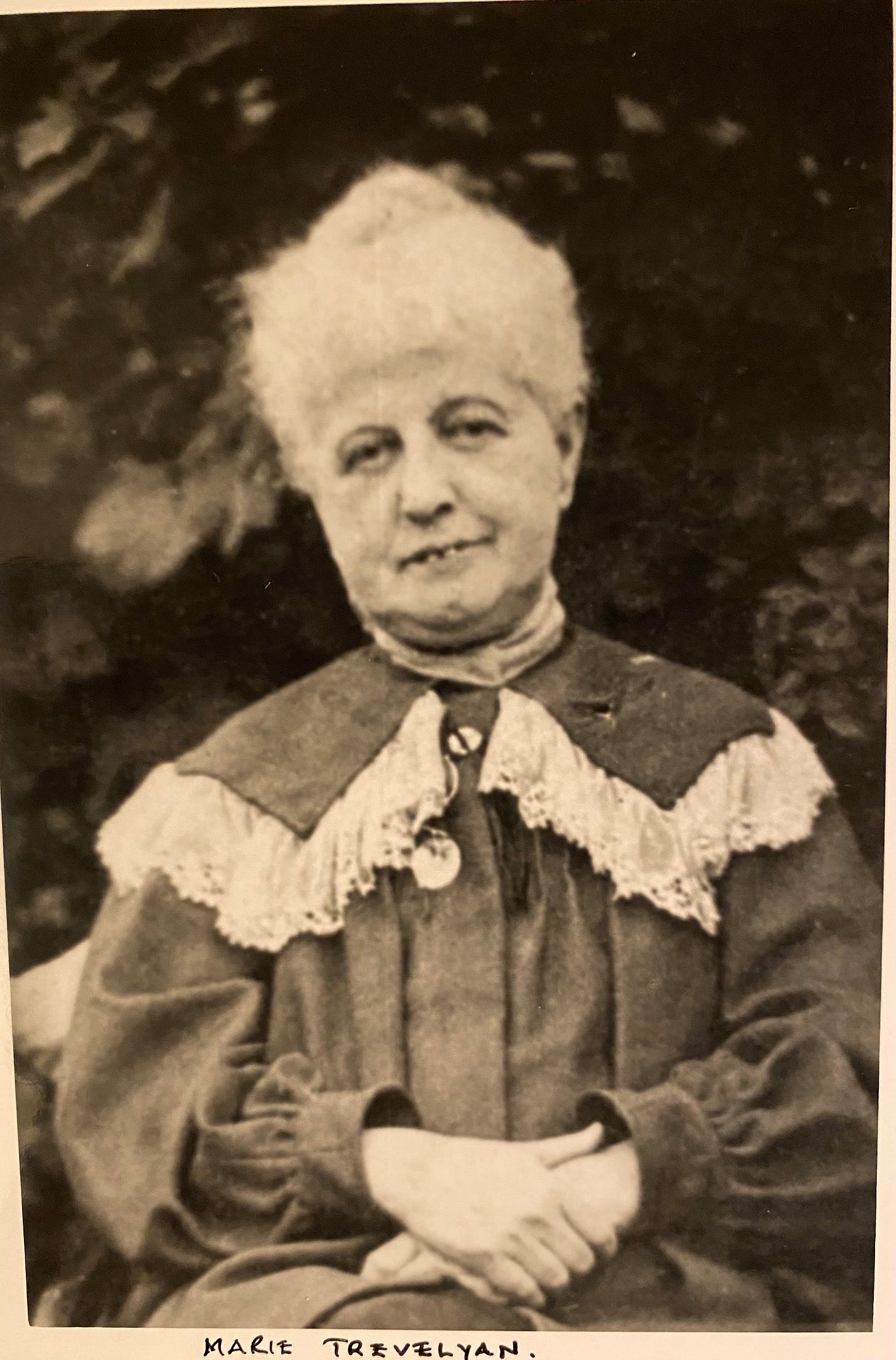
Loved reading this. Fascinating that she called herself a widow - shows you can’t believe all of the information on official documents !!
A fascinating account of a fascinating life! Your enthusiasm for documenting this shines though in your engaging writing. Diolch for sharing!